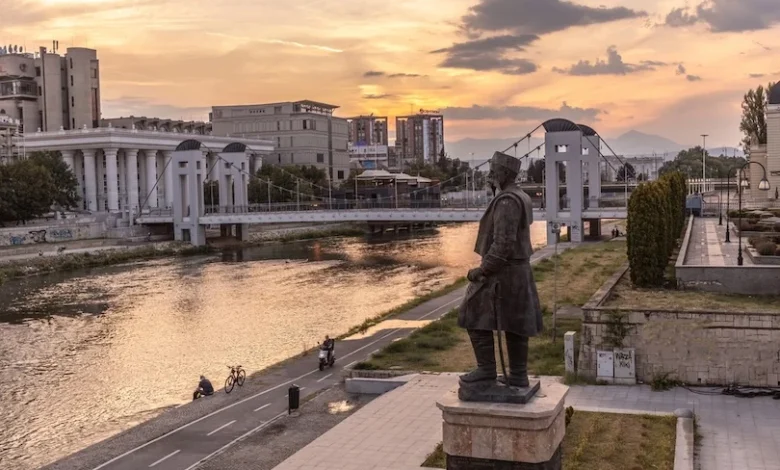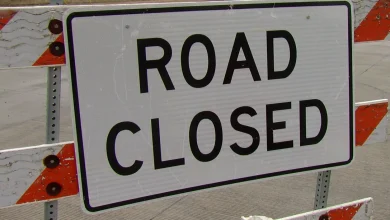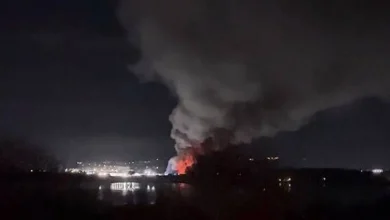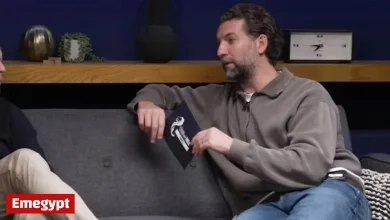Opinion – North Macedonia’s Emergent Ethnic Nationalism

The 2025 North Macedonian local elections constituted one of OSCE’s largest election observations in recent years, reflecting OSCE’s continued commitment to the political stability of the region. Elections were held on 19 October 2025, with run-offs on 2 November 2025. Regional issues predominated in both polls but the Electoral Commission reported the lowest turnout since independence. Reflecting ubiquitous ‘voter apathy’, the ethnic mix of North Macedonia also reveals a surprising complexity. This ethnic diversity is often under-identified in a territory which for several years after the fall of Yugoslavia was known as the Federal Yugoslav Republic of Macedonia (FYROM). North Macedonia is a landlocked country without internationally recognized, sovereign ‘enclaves’, yet it contains great demographic diversity. The entire country is effectively an ‘enclave’ of the wider Balkan region, now neighbour to five different new states. I remember during my first visit as a teenager, Marshall Tito’s ubiquitous portrait smiling everywhere in a united Yugoslavia that said several communities within North Macedonia are also ‘enclaves’ in a cultural, ethnic, or religious sense. Take Vevčani, often dubbed the “Republic of Vevčani”. A self-declared “micro-nation” during the breakup, it remains an Orthodox Christian enclave whose surrounding villages are predominantly Muslim.
Then there is Skopje’s Old Bazaar or “Turkish enclave” with its Ottoman architecture. Financial support from Ankara and Gulf states has funded renewal of local facilities and mosques. These ethnically diverse areas are integral parts of North Macedonia’s territory, not sovereign geographical enclaves. However, in many ways, the local elections amplified their ethnic diversity. In the first round, the ruling VMRO-DPMNE won the most mayoral spots (33) while VLEN won 5 municipalities, SDSM (3) and NAI (3) In the second round, the ruling conservatives achieved just over two-thirds of the mayoral contests, leaving opposition Social Democrats far behind. Working within this pattern, ethnic communal interests were only partially satisfied. This has heightened the desire of Macedonia’s ethnic groups to obtain better representation. They have individually seen their aspirations for greater self-government hastened by the evidence of what they might achieve outside the VMRO-DPMNE camp.
There are no distinct Russian-speaking areas in North Macedonia. Russian speakers are part of a small minority population. North Macedonia does, however, possess a community far more locally powerful than any of the distinctive communities mentioned above. One might argue that North Macedonia possesses a distinctively Roma ‘enclave‘, increasingly distrustful of the failure of “big government” in Skopje to deliver for its residents. The 2025 local elections, despite all the hurdles of political representation, depict the Roma community in comparative political ascendancy. This may well be the last election where its representation will be anything but solidly Roma. Shutka (Šuto Orizari), a municipality within Skopje with the world’s largest concentration of Roma people, is the only municipality with a Roma-run local government. It is effectively a Roma ‘enclave’. Roma people likely arrived in Europe from northern India a thousand years ago. In Europe, there are 12 million Roma — making them the continent’s largest minority — over half of which live in the EU. The Council of Europe estimates 200,000 live in Macedonia.
Over 80% of Suto Orizari’s population is Roma. The Shutka municipality uses Romani as an official language, making it a unique case in Europe. Suto Orizari’s residents enjoy several TV channels in Roma and proudly hang its colourful flag featuring the symbolic Roma wheel. Its principal streets – Che Guevara and Garcia Lorca – lead unto a sprawling bazaar festooned with traditional Roma music and entertainments. While racist attacks on Roma are common in Europe, there is a level of security and autonomy in Shutka that is lacking elsewhere. Across the Balkans many Roma were displaced and disenfranchised as a result of the Yugoslav wars. Many remain stateless, including some in Shutka.
This ‘enclave’ of southern Europe is a rare example of Roma “relative autonomy”, Sead Ismail, President of Shutka’s municipal council, explains:
We Roma feel safe and protected by Shutka’s municipal council. This is the only place where Roma are organised politically and economically and fill their lives for themselves and one another. I’ve visited Roma communities in Romania, Slovenia and Slovakia…And in many of those settlements, they don’t have representatives, or electricity, or sewer systems. And they’re in the EU! Here we have left behind the atrocities we experienced during the Balkan conflict of the 1990s. We have put our lives back together and we increasingly want our own political leaders.
Roma have lived in Macedonia since the 15th century, and congregated in Shutka (somewhat accidentally) after the earthquake in 1963 which destroyed much of Skopje. Prior to that, Suto Orizari was a desolate zone– the name literally means “barren fields.” As part of Skopje’s new urban plan, combining brutalist architecture and social engineering, the Roma were relegated to the area. It boomed. Local resident (Meneshka Umjer) describes the post-earthquake growth of the enclave:
We had nowhere else to go but we gave it our best. It was like a Roma-homeland. Now we are maybe 50,000 Roma with our own Mayor, our own decision-making and essential services, and our own identity. To some extent we are impervious to the wider politics of the local elections because we make everything for ourselves. It is Shutka first and Skopje second… Unfortunately, we are not well favoured in jobs, and we do not yet have powers to raise our own taxes.
Macedonia (as FYROM) became independent in 1991 and in 1996, the Roma living in Shutka began to govern themselves. In 2001, Macedonia narrowly avoided civil war between ethnic Macedonians, who are Slavs, and ethnic-Albanians, who make up 25% of the population. The peace agreement guaranteed minorities, including Roma, a role in the government. Zeljko Jovanovic, Director of the Roma Initiatives Office of the Open Society Foundation explains the evolution of this “state within a state”:
Macedonia is unique in the sense that it has the most stable, numerous representations of Roma in politics anywhere in Europe. Political participation can be better, but it is not a major issue. There are now several Roma members of parliament, even ministers; and high-level officials serving in the government. We object that not as many of us are admitted to government as is required by the quota system for the Macedonian civil service. Increased civil service participation doesn’t automatically translate into benefits for ordinary people. However, we campaign for improvement.
By the 2002 census, Roma were 2.7% of the total population, and current government representation is at 1.4%, with 1,698 public officials, marking significant progress. However, one can see that Zeljko Jovanovic’s demands are reflected in frustration with the sluggish nature of some political changes. Only 0.2% of these Roma civil servants are managers, and only 0.3% hold elected positions, in figures provided by Macedonia’s Ombudsperson. Mayor Elvis Bajram observes:
Shutka is one of the poorest municipalities, in one of Europe’s poorest countries. There has been no census since 2002. In the summer, we don’t have any water in our public fountains. The municipality was gerrymandered so that all but one of the factories abutting Shutka, officially belong to other jurisdictions, but only four of 400 employed are Roma at the factory in their jurisdiction. Without any tax revenue from the factories or the market, it is hard to provide services to our constituents. This is a tremendous opportunity for Roma to experience self-government, and I see it as an opportunity to show that if Roma are given a chance, they will exercise their own political power.
Shutka depends on the central government to redistribute funds from the national budget, therefore the parties in power largely control Roma votes. Indeed, of six political parties in Shutka, five are part (de facto proxies) of the country’s ruling coalition. Critics of the government complain about the way “machine politics” work in the municipality. Quality-of-life indicators for the Roma community in Macedonia are poor. Open Society Foundation economy figures are stark. Only 11% of Roma complete high school, compared with 60% of the general population. Roma in Macedonia have a lifespan 10 years shorter than the 76-years Macedonian average. Many cannot access healthcare because of prejudice and lack of documentation, with some 10% of Shutka residents are undocumented. Residents complain about the government’s lack of assistance, in juxtaposition with the state’s $730m investment in the city-centre of Skopje, which controversially brought about gargantuan statues and neo-classical facades. Partially, these “Potemkin” adornments are an antagonistic gesture at Greece, currently blocking North Macedonia’s EU/NATO membership. However, it also expresses Macedonian nationalism and may not sit well with the workaday aspirations of its divergent ethnic communities. Their mayors want spending on their own municipalities.
In Shutka – an enclave of Roma self-governance, residents are largely protected from the discrimination that exists in other Macedonian districts where Roma live. Nevertheless, Shukta’s challenges are immense, and the practical demands of Roma and other ethnic groups will be more visible in future North Macedonian elections. North Macedonia’s 2025 local elections are in many ways as significant as any parliamentary vote. They point to an emergent ethnic-identity, translating into “enclave-politics”, a trend which is likely to accentuate into national election patterns.





